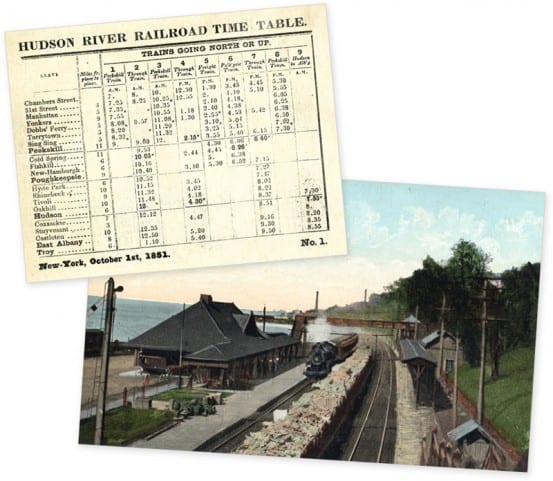
A postcard of Dobbs Ferry station, and a portion of a Hudson River Railroad timetable from 1851, listing Dobbs Ferry station
Welcome to Dobbs Ferry, one of the lovely Hudson Line stations with a great view of the mighty Hudson River. On the fourth of July, I spent the day exploring the Hudson Line, but ended up spending most of my time here. The waterfront view is quite lovely, and adjacent to the station is the aptly named Waterfront Park – reason enough for you to come and visit this place. Though the station used by Metro-North particularly noteworthy (besides the nice Arts for Transit piece), the old station building still stands and is a lovely piece of railroad architecture. Though I didn’t get to see the inside, the station has two floors, the first of which has a waiting room, ticket window, bathrooms and a boiler room. It was designed by architects Shepley, Rutan and Coolidge in 1889. Last year the town was looking for proposals for businesses interested in leasing the station, but apparently all of those proposals were later rejected.
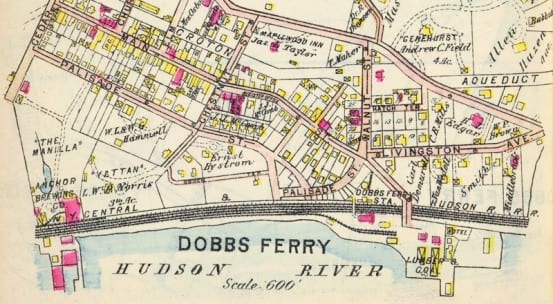
A 1914 map of Dobbs Ferry, depicting both the railroad and the river. Note the railroad sidings that are no longer present today.
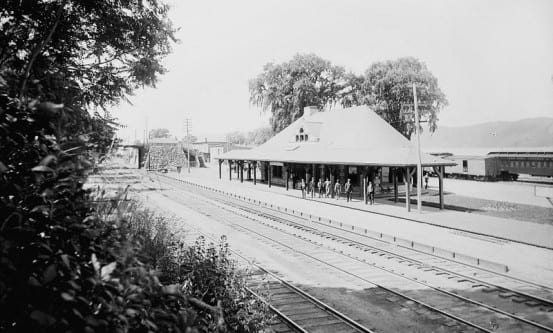
Early 1900’s view of Dobbs Ferry station
Dobbs Ferry itself was named, as one would expect, after a ferry crossing over the Hudson River. Members of the Dobbs family arrived around the 1700’s, and operated their ferry until 1759. Other area ferries operated until the early 1900’s. It was this ferry that made the area an attractive place for an encampment of General Washington’s troops during the Revolutionary War.
The current station at Dobbs Ferry, operated by Metro-North, is about 20 miles from Grand Central Terminal. The average train time to Grand Central Terminal is around 45 minutes. As previously mentioned, the station isn’t particularly noteworthy, but it did have a bit of a makeover in the mid-2000’s. The work at the station, part of the Hudson Line Stations Improvement Project, was completed in 2008. It included updates to the platform, overpass, and a new platform canopy. An elevator was also installed in the updated overpass, making the station ADA compliant. While this was all going on, some attractive art was also added to the station platform, as part of the Arts for Transit program.
Floating Auriculas, the lovely mosaic found at Dobbs Ferry, is probably the nicest thing you’ll find on the platform. Behind this piece is artist Nancy Blum, who has created public art for venues across the country. My love for the transit system in Minneapolis has been well documented on this site, and I was surprised to note that not only is Blum working on the art for three stations on the new Central Corridor line, she also did the art on my favorite, East Bank station. Blum has done public art in various media, but for the most part the underlying theme is nature and the natural world, and the piece at Dobbs Ferry certainly fits that theme. Blum’s lovely auricula flowers, about eight feet in diameter, adorn the side of the northbound platform, rendered in mosaic form using Italian glass and marble tile.
Thanks to Blum’s website, we get a lovely view of the progression of an Arts for Transit piece – from an original painting, all the way to the finished mosaic on the station platform. The first four photos above are from the artist’s site, the remainder (above and below) are mine.


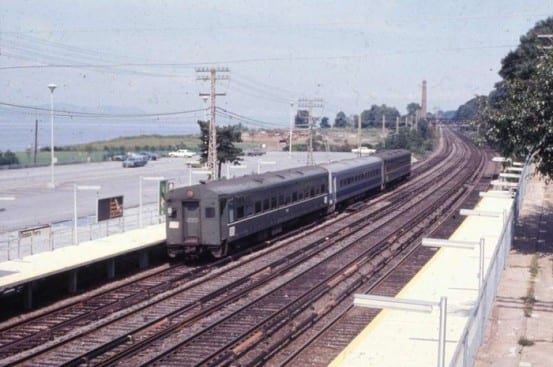
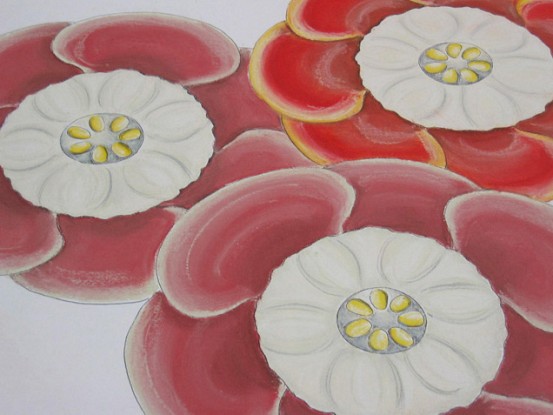
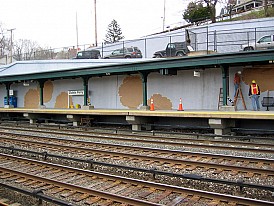
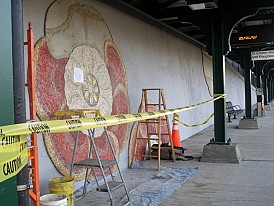
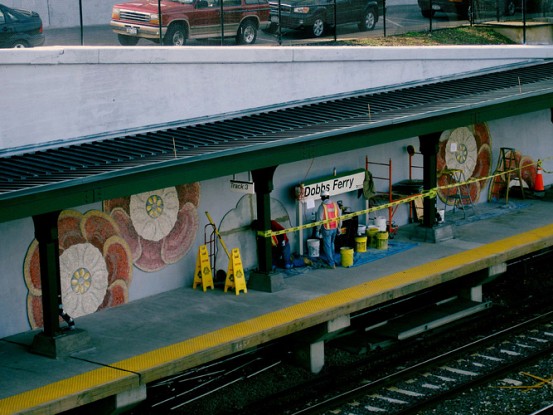
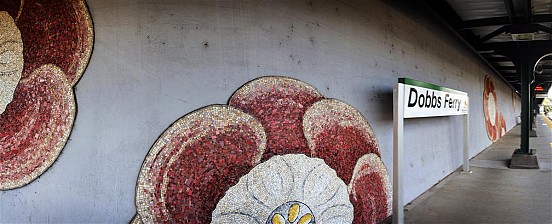
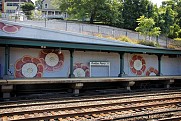
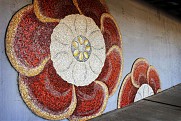
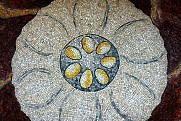
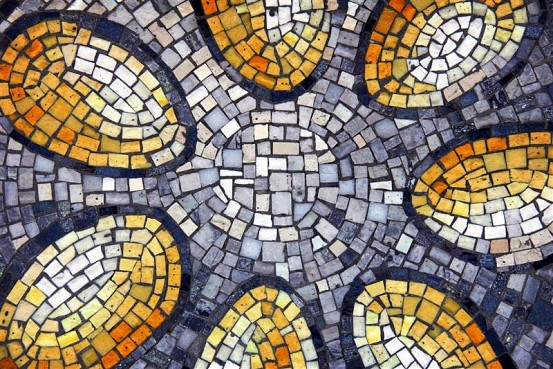
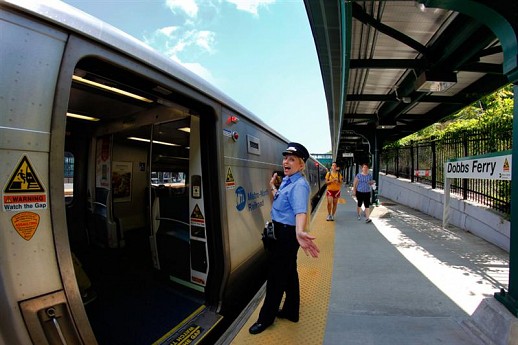
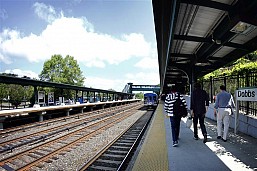
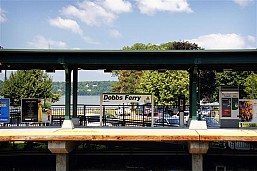
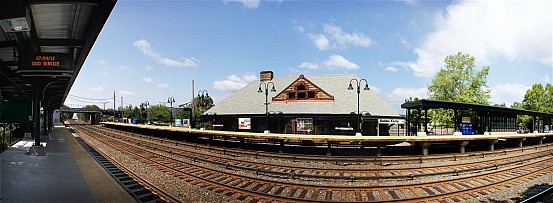
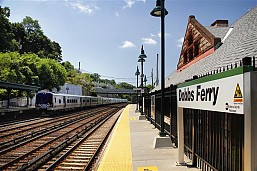
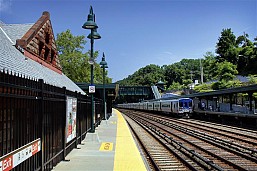
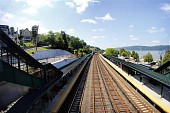
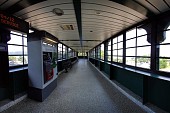
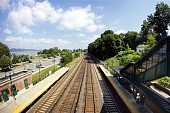
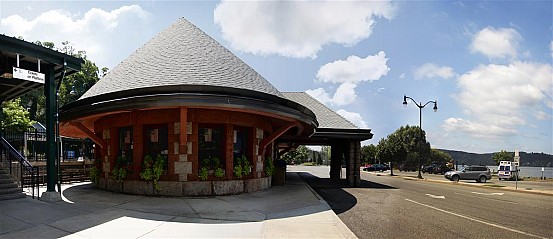
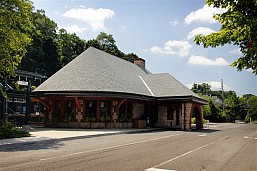
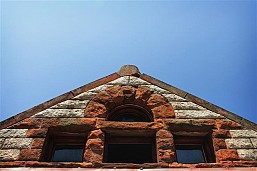
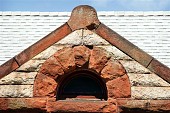
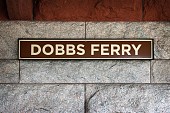
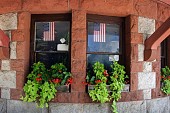
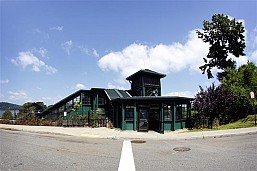
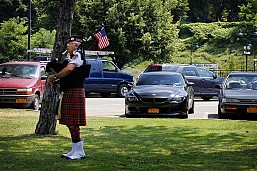
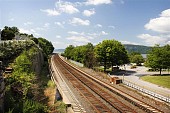
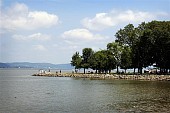
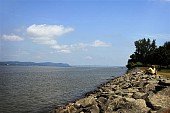
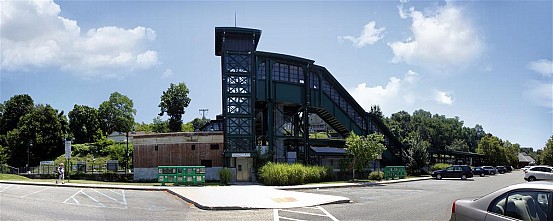
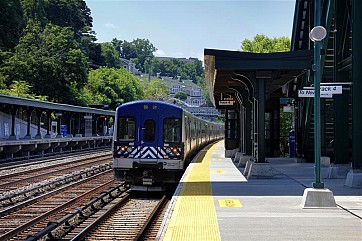
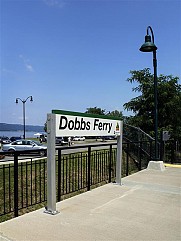
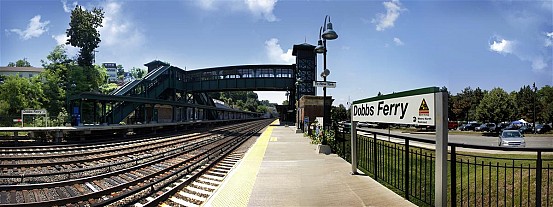
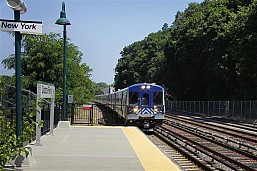
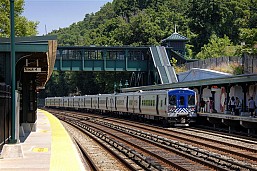

You can see it far in the distance in this photo.
Dobbs Ferry, the first M-N station I ever photographed. 128 stations later…
thanks again Emily…fantastic…
“The Depot Attic” which was a treasure-trove of vintage RR items for purchase was in the cellar ( an “Attic” in a cellar !?) of a house in Dobbs Ferry and the proprioter was Fred Arnone , now deceased.
Fred was open Sat. afternoons and had annual auctions. He purchased a very early New York & Harlem River RR stock certificate from me.
Fred Arone is pictured inside the back cover of Gallo and Kramer’s “The Putnam Division”, along with NYC Agent Edwin Messick. Messick lived to age 93, on a diet of whiskey, eggs, and popcorn. I could do without the popcorn.